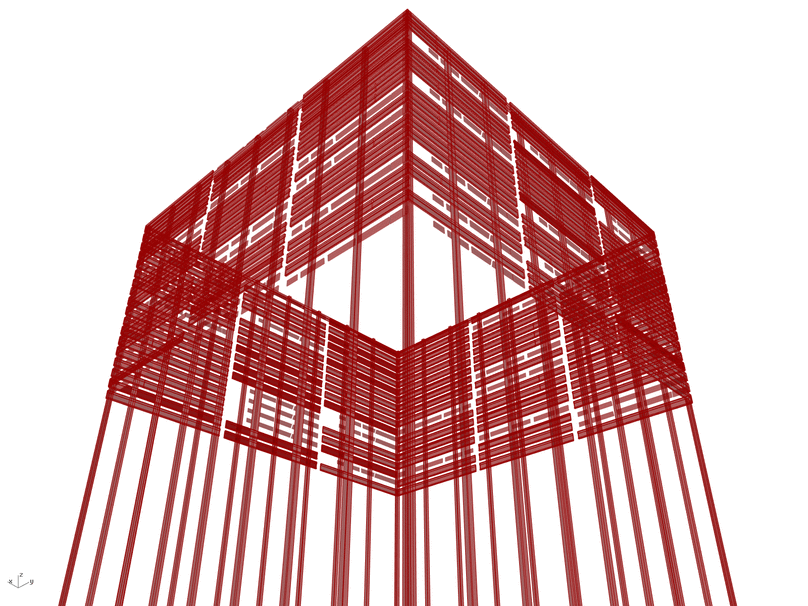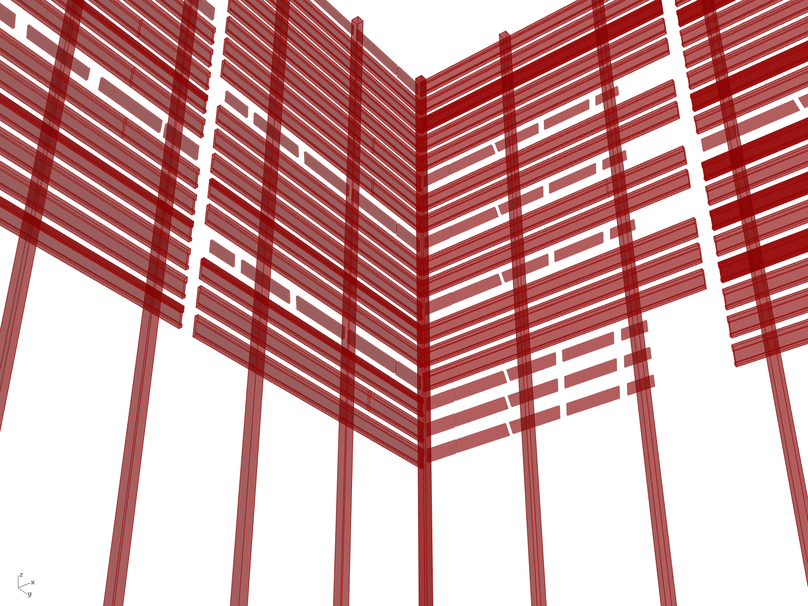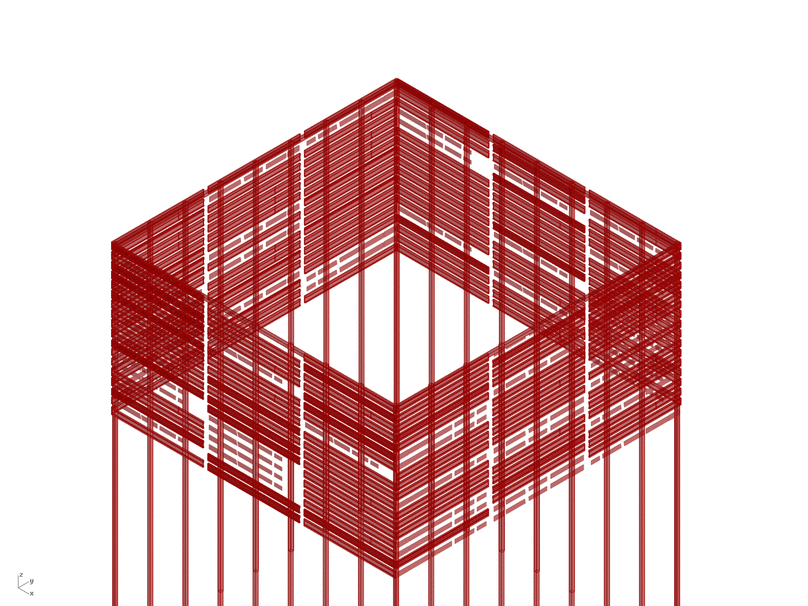As we mentioned in our previous post, we are now working with the artist, Seth Clark, who is fascinated with the way buildings decompose over time. As we have continued our exploration, we made the decision to develop a “Typology of Ruin” for a simple wood-framed structure, which we represented in the form of animations.

What are the mechanisms of time’s destructive impact on the wood boards of the facade? We decided on six actions:
1) Rotating the beam about a single point, as though a fastener had failed.
2) Breaking the wood at an intermediate point in its width.
3) Splitting the wood into smaller horizontal strips, which peel away progressively from the original board.
4) Fragmenting the wood, as though it were decomposing.
5) Allowing the wood to simply fall from it’s original position
6) Permitting the wood to remain unaffected by time

My talented intern, Shan Wang, used the parametric program, “Grasshopper” which plugs into “Rhino”, our cool, 3D modeling software of choice to build the wall systems. Then she wrote code from scratch that randomly assigned a different method of destruction to each board.
Designing the project using parametric methods allowed us to manipulate the data in order to quickly generate many different design solutions. As well, the digital design process allowed us to isolate and study each method in ways that would not have been possible using traditional methods.

We also discussed the possibility of using parametrics to illustrate three dimensionally the way one of Seth’s structures would have decomposed over time. It would have been a great idea; but we quickly realized our office computers simply weren’t powerful enough to allow this to happen.
Yet this exercise of breaking down the way things fall apart into categories was valuable. Why? Because it allowed us to understand ruins not just as a whole, but as a series of distinct parts, each with it’s own discrete narrative. Studying things analytically allows us to move beyond the inevitable human tendency to romanticize and sentimentalize our subjects.
